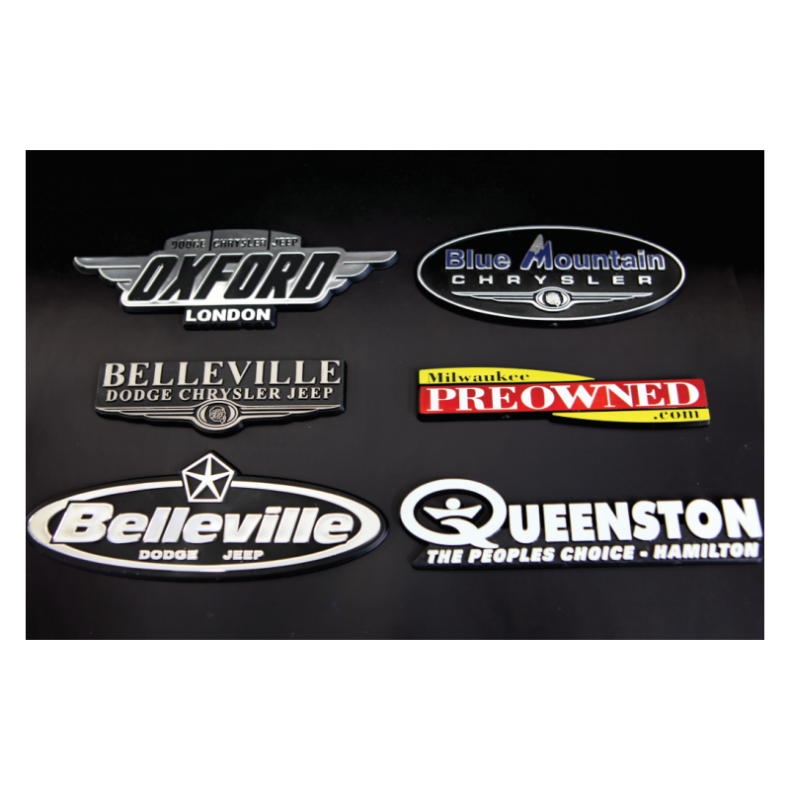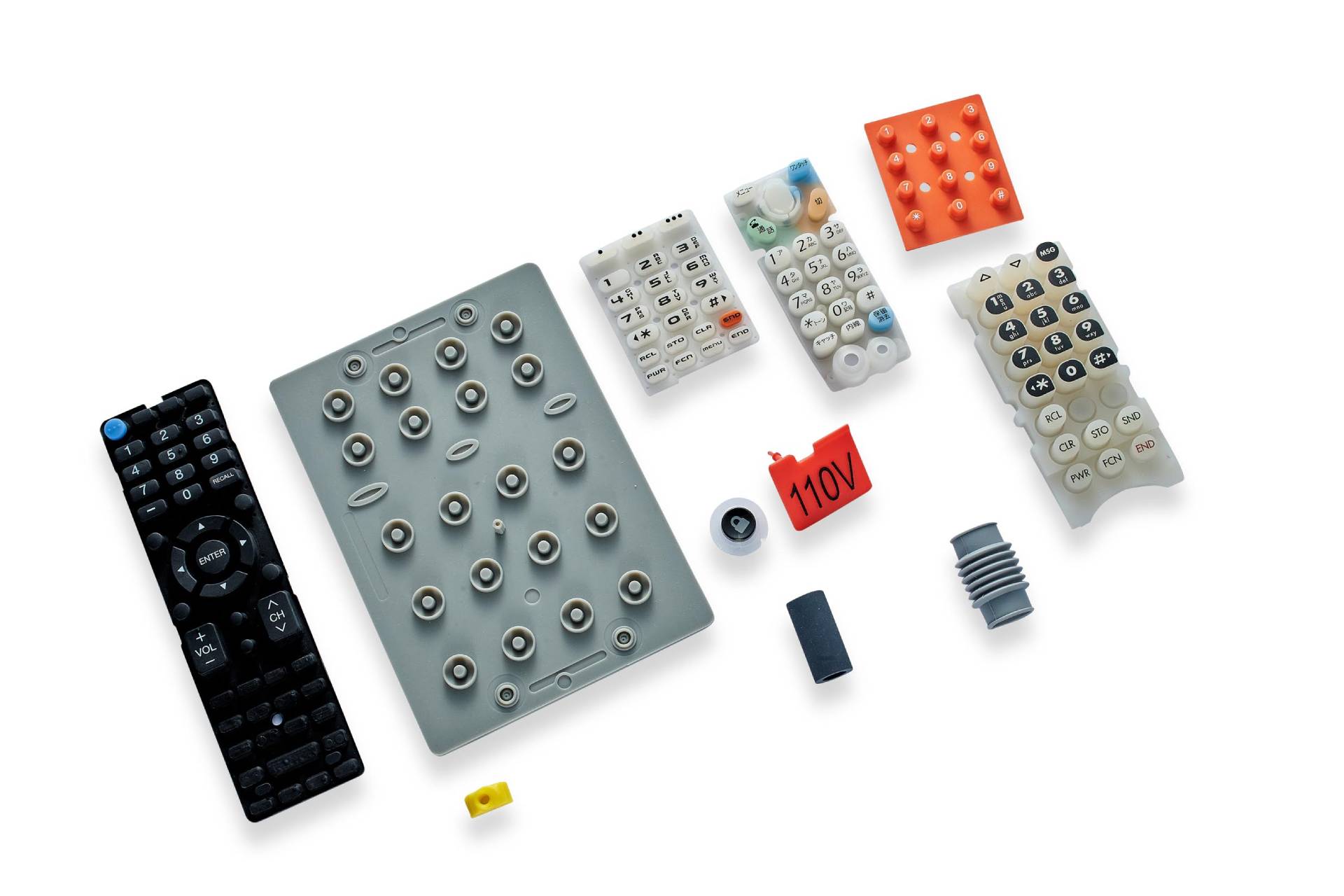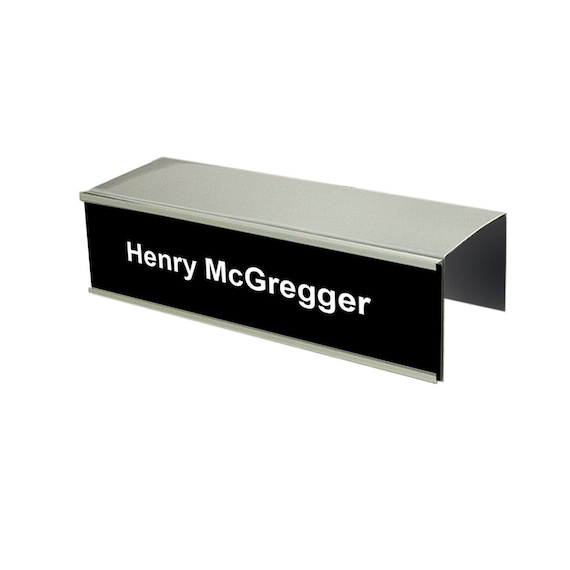How Plastic Nameplates Support Safety Compliance in Manufacturing
How Plastic Nameplates Are Produced: A Comprehensive Overview to Their Manufacturing Refine
The manufacturing of plastic nameplates includes a number of exact steps, starting from the choice of suitable materials to the final finishing touches. Each phase is essential, guaranteeing the product satisfies particular needs for toughness and looks. Various manufacturing techniques play a considerable duty in crafting these nameplates. Understanding these procedures can clarify the intricacies behind what might appear like a straightforward product. What variables add to the high quality and personalization of these nameplates?
Understanding Plastic Materials Made Use Of for Nameplates

The Layout Process: From Principle to Model
The layout procedure for plastic nameplates begins with a clear idea that overviews the general creation. Designers team up with clients to specify the purpose, style, and specific demands of the nameplate. This preliminary stage consists of brainstorming sessions, sketching ideas, and picking shades and fonts that align with branding goals.Once the principle is developed, developers use computer-aided layout (CAD) software application to create thorough electronic representations. These prototypes enable visualization and adjustments before relocating onward. Feedback from stakeholders is essential during this phase, as it aids improve the layout to satisfy expectations.After wrapping up the digital prototype, a physical design might be produced, commonly via strategies like 3D printing. This concrete depiction makes it possible for more evaluation of aesthetic appeals and performance. In general, the style process is a vital action that lays the foundation for the reliable production of top quality plastic nameplates.
Reducing and Shaping the Plastic
In the cutting and shaping stage of plastic nameplate manufacturing, the selection of materials plays a crucial function in figuring out the end product's top quality and durability (Plastic Nameplates). Various accuracy cutting techniques, such as laser cutting and CNC machining, warranty that the plastic is shaped with precision and consistency. This combination of mindful product option and progressed cutting approaches is essential for creating high-grade nameplates

Material Selection Process
Choosing the best material is vital for producing high-quality plastic nameplates. Different types of plastics are readily available, each offering distinct advantages and attributes. Common selections include acrylic, polycarbonate, and PVC. Acrylic is favored for its clearness and UV resistance, making it excellent for outdoor applications. Polycarbonate, recognized for its resilience and effect resistance, appropriates for atmospheres that call for boosted defense. PVC is frequently selected for its cost-effectiveness and adaptability in layout. The option procedure also thinks about variables such as surface area, color, and density finish, which can substantially influence the last appearance and performance of the nameplate. Eventually, the chosen material needs to straighten with the intended usage and visual goals of the plastic nameplate.
Precision Cutting Techniques
While selecting the suitable material lays the groundwork, accuracy reducing techniques play an important function fit the plastic nameplates right into their last kinds. Numerous techniques, including laser cutting, CNC milling, and die cutting, are employed to achieve precision and uniformity. Laser reducing uses focused light to generate clean edges and detailed styles, suitable for complex patterns. CNC milling supplies flexibility by getting rid of excess material with accuracy, suiting numerous densities and shapes. Die reducing, on the various other hand, enables automation of uniform items, enhancing efficiency. Each strategy is picked based on the layout requirements and the wanted coating, making certain that the end product fulfills high quality standards and client expectations while keeping longevity and aesthetic allure.
Printing Methods for Modification
Exactly how can producers attain vibrant and accurate designs on plastic nameplates? The response exists in different printing strategies tailored for personalization. Digital printing has obtained popularity because of its capability to produce high-resolution photos and complex layouts straight onto plastic surface areas. This technique permits quick turn-around times and very little arrangement prices, making it perfect for short runs and individualized orders.Screen printing remains an additional commonly made use of strategy, especially for larger amounts. It involves developing a stencil and using layers of ink, causing rich colors and durability. UV printing, which uses ultraviolet light to cure the ink, is additionally reliable, giving exceptional attachment and resistance to fading.Additionally, pad printing supplies adaptability for irregularly designed nameplates, permitting detailed designs on tough go to the website surfaces. These printing techniques go to these guys allow suppliers to fulfill varied client needs while making sure top quality and durability in their plastic nameplate items.
Surface Therapies and Finishing Options

Quality Control Procedures in Production
Ensuring the greatest standards of quality control throughout the manufacturing of plastic nameplates is crucial for preserving product stability and client fulfillment. Producers implement extensive inspection protocols at various phases of the production procedure. Raw materials undergo thorough testing to validate they satisfy specs for longevity and shade uniformity. Throughout the molding phase, automated systems monitor criteria such as temperature and pressure to avoid defects.In addition, visual evaluations are performed to recognize any surface area blemishes or misalignments. As soon as the nameplates are created, they are subjected to useful tests, including bond tests for printed elements and stress and anxiety examinations for durability. Quality control groups commonly use statistical sampling techniques to assess sets, making certain that any type of inconsistencies from requirements are immediately dealt with. This detailed method not only enhances product top quality however also promotes count on with customers, attesting the supplier's click for info commitment to excellence in every nameplate produced.
Packaging and Circulation of Finished Nameplates
The packaging and distribution of completed plastic nameplates are vital steps in ensuring they reach clients in excellent condition. Various packaging materials are chosen to secure the nameplates during transportation, while delivering methods are very carefully picked based upon performance and cost-effectiveness. In addition, reliable storage solutions are implemented to maintain top quality until the nameplates are delivered.
Product Packaging Materials Used
Choosing proper packaging products is essential to ensure their defense throughout transportation when dispersing completed plastic nameplates. Commonly used products consist of bubble wrap, foam padding, and cardboard boxes, all developed to cushion the nameplates against effects and shocks. Bubble wrap offers a flexible obstacle, while foam cushioning warranties that nameplates remain firmly in location, minimizing the danger of scratches or damage. Additionally, sturdy cardboard boxes are used to contain the nameplates, providing architectural support and security from exterior elements. Tags may be used to suggest handling directions or fragile materials, additionally enhancing safety and security during transport. On the whole, making use of top notch packaging materials significantly adds to the integrity and presentation of the ended up plastic nameplates upon arrival at their destination.
Shipping Approaches Employed
Efficient distribution of ended up plastic nameplates relies upon numerous delivery methods that assure secure and timely distribution. Companies usually utilize messenger solutions, products shipping, and post offices, depending upon the dimension, weight, and location of the bundles. For neighborhood shipments, messenger services supply fast transit, making sure nameplates reach consumers promptly. For bigger orders, products delivery is preferred, making use of vehicles or delivery containers to transfer bulk quantities effectively. Post offices function as a cost-effective alternative for smaller deliveries, specifically for residential shipments. All shipping techniques prioritize safety product packaging to prevent damages throughout transportation. Tracking systems are also used to check deliveries, giving clients with real-time updates and peace of mind relating to the condition of their orders.
Storage Solutions Implemented

Often Asked Questions
What Types of Services Commonly Utilize Plastic Nameplates?
Plastic nameplates are typically used by various services, consisting of offices, manufacturing facilities, institutions, and healthcare facilities. These nameplates offer essential features such as identification, info display, and branding, adding to organizational efficiency and professional look across diverse atmospheres.
For how long Does the Entire Manufacturing Refine Take?
The manufacturing process period varies based upon intricacy and quantity, typically ranging from a few days to a number of weeks. Aspects affecting this timeline include layout approval, material accessibility, and production methods used by the firm.
Can Plastic Nameplates Be Recycled After Use?
Plastic nameplates can be recycled, provided they are made from recyclable products. Nonetheless, the availability of recycling programs and regional regulations may impact their recyclability. Proper disposal techniques are vital to guarantee efficient recycling.
What Are the Ecological Influences of Plastic Nameplate Manufacturing?
The environmental effects of plastic nameplate manufacturing consist of carbon emissions, source deficiency, and air pollution from making procedures. Plastic Nameplates. Additionally, improper disposal adds to plastic waste, detrimentally affecting ecological communities and wildlife, highlighting the requirement for sustainable techniques
Are There Any Security Interest In Plastic Nameplates?
Safety and security worries concerning plastic nameplates mostly include possible chemical direct exposure throughout production and the danger of materials deteriorating over time, which may cause harmful compounds being released, influencing both human wellness and the setting. While different materials can be used for nameplates, plastic remains a popular choice due to its convenience and sturdiness. In the cutting and forming phase of plastic nameplate production, the choice of products plays an essential role in determining the final item's top quality and longevity. Choosing the best product is crucial for creating top notch plastic nameplates. While choosing the suitable product lays the foundation, accuracy cutting methods play a vital role in forming the plastic nameplates into their last types. When distributing ended up plastic nameplates, selecting proper product packaging products is necessary to guarantee their security throughout transit.